Community gardens provide an easily accessible retreat from the concrete jungle of a city, even a city as scenic as San Francisco. For the best two weekends, I’ve spent time in the Fort Mason Community Garden, not just to enjoy the incredible flowers and plants, but also to take in the vibrant bird life.
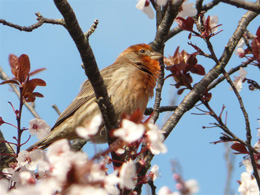
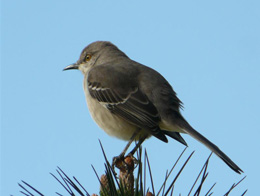 The garden is an oasis for a number of species of birds, including a number of nesting birds. Some birds are there all year round, like the ubiquitous House Finches, who are at their finest posing in blooming trees just outside the garden, or the Lesser Goldfinches, with their green backs and black caps.
The garden is an oasis for a number of species of birds, including a number of nesting birds. Some birds are there all year round, like the ubiquitous House Finches, who are at their finest posing in blooming trees just outside the garden, or the Lesser Goldfinches, with their green backs and black caps.
This is a reliable place to find and hear Mockingbirds, who thrive in the garden. This weekend there were at least five in the garden, with two juveniles performing incredible gymnastics in the air as they chased each other. They are incredible mimics – not long ago, while walking along Chestnut Street, I heard the four different, distinctive sounds of a car alarm. The alarm, however, was coming not from a street level car, but from a mockingbird perched at the top of a building.
This year, Hooded Orioles nested in a palm tree at the entrance to the garden. The family of Orioles is still hanging out at the garden, which provides plenty of food for them. Within a couple of weeks, however, they will be gone, back to their wintering grounds in Mexico. Sometime in early March, they will return, a bright yellow and black sign of spring.
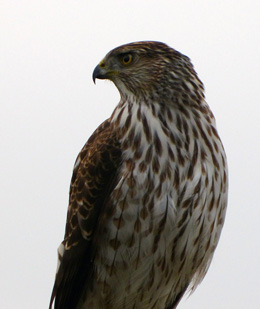 The garden is a gathering place for ravens, and there can be as many as 25 of them in the trees around the garden, with their loud calls almost, but not quite, a match for the raucous calls of the Red Masked Parakeets, who can be heard virtually every day of the year in early morning in the garden. Last Sunday morning, the ravens took offense to the presence of a Cooper’s Hawk, and mercilessly mobbed the hawk until it flew for cover deep inside a Eucalyptus tree.
The garden is a gathering place for ravens, and there can be as many as 25 of them in the trees around the garden, with their loud calls almost, but not quite, a match for the raucous calls of the Red Masked Parakeets, who can be heard virtually every day of the year in early morning in the garden. Last Sunday morning, the ravens took offense to the presence of a Cooper’s Hawk, and mercilessly mobbed the hawk until it flew for cover deep inside a Eucalyptus tree.
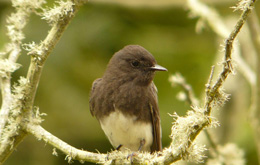
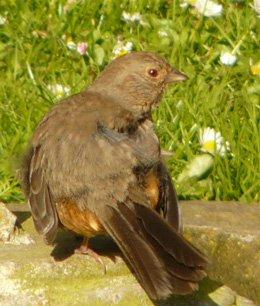 Anna’s Hummingbirds, our year round hummer, are numerous in the garden, and are quite bold, seemingly oblivious to the people in the garden as they perform acrobatics. There is also a resident Black Phoebe, who finds flycatching easy in the garden. The California Towee, a fairly plain brown bird with an orange rump, can also usually be found in the garden. House Sparrows, the common bird most of us ignore, are everywhere (it fascinates me that this bird, which was introduced from Europe many years ago as part of a plan to bring to the U.S. all the birds mentioned in Shakespeare’s writings, is now rare, and potentially endangered, in its native England).
Anna’s Hummingbirds, our year round hummer, are numerous in the garden, and are quite bold, seemingly oblivious to the people in the garden as they perform acrobatics. There is also a resident Black Phoebe, who finds flycatching easy in the garden. The California Towee, a fairly plain brown bird with an orange rump, can also usually be found in the garden. House Sparrows, the common bird most of us ignore, are everywhere (it fascinates me that this bird, which was introduced from Europe many years ago as part of a plan to bring to the U.S. all the birds mentioned in Shakespeare’s writings, is now rare, and potentially endangered, in its native England).
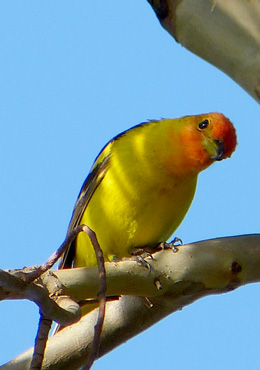 When fall comes, the migrants come through and the winter residents arrive. Some arrive annually, like the Golden Crowned Sparrows with their sweet song, and the Fox Sparrows that like to toss leaves around on the ground. The Red-Shafted Northern Flicker, an attractive large woodpecker, winters in the garden, and for the past two winters a female Orchard Oriole, normally found only in the eastern half of the U.S., has spent the winter in the garden. Other birds just migrate through in August and September, like the amazingly colored Western Tanager, with its bright yellow, red and black plumage. I saw one in the garden last weekend, a sure sign that fall migration is under way.
When fall comes, the migrants come through and the winter residents arrive. Some arrive annually, like the Golden Crowned Sparrows with their sweet song, and the Fox Sparrows that like to toss leaves around on the ground. The Red-Shafted Northern Flicker, an attractive large woodpecker, winters in the garden, and for the past two winters a female Orchard Oriole, normally found only in the eastern half of the U.S., has spent the winter in the garden. Other birds just migrate through in August and September, like the amazingly colored Western Tanager, with its bright yellow, red and black plumage. I saw one in the garden last weekend, a sure sign that fall migration is under way.
© Photos by David Assmann
Additional Resources